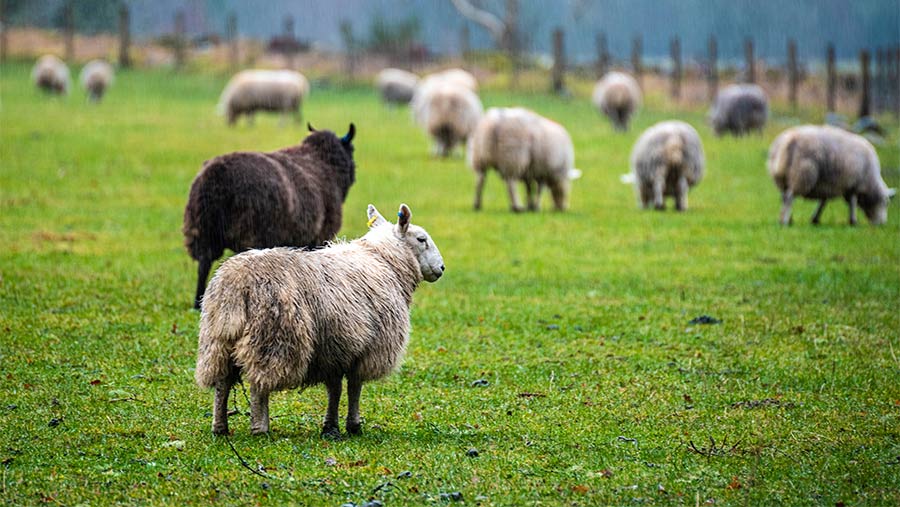Ewe worming rates could rise after wet weather pressure
 © Adobe Stock
© Adobe Stock A dismally wet winter has prompted sheep health experts to issue a timely reminder about the importance of ewe body condition when targeting wormers at lambing time.
The Sustainable Control of Parasites in Sheep (Scrops) group is advising sheep farmers to expect to worm more thin sheep to manage the rise in worm egg shedding in the peri-parturient period.
The prolonged wet weather has taken its toll on ewe body condition score (BCS).
See also: How goat herd uses targeted parasite treatments
Some farms have been unable to relocate ewes to better grazing because of Bluetongue virus restrictions, while others have been inundated with rain or had winter forage crops flooded.
Worming remains a necessary process in some sheep systems to address worm burdens in thin ewes that have compromised immunity (see “Compromised immunity and worm egg shedding”).
However, independent sheep consultant Lesley Stubbings stressed it remained as important as ever to target the ewes being treated rather than using blanket treatment.
Speaking on behalf of Scops, Lesley said: “Whatever the reason why, it is the ewes who’ve lost body condition that need to be targeted.
“If you just treat those females – which are the ones more likely to produce a high number of worm eggs in their dung – you can reduce the total amount of anthelmintic used this spring compared to blanket treating, without impacting production.”
Compromised immunity and worm egg shedding
- Fit ewes in good condition do not need worming because immunity has built up as a result of exposure to worms as lambs.
- Thin ewes have reduced immunity to roundworms.
- During the stress of lambing and rearing lambs, ewes increase the shedding of eggs onto pasture in dung.
- Eggs build up and hatch into infective larvae.
- Lambs start grazing pasture about the time larvae hatch and are exposed to roundworms.
Reduced doses
Blanket dosing all ewes to manage the peri-parturient rise was historically advised.
However, targeting doses at thin ewes is now advised as the best way to manage this rise and keep anthelmintics working.
Current advice is based on research that finds ewes in low BCS or underfed protein in late gestation are most affected in the worm immune response.
Scops says farmers can save at least one in 10 doses, and in some cases, dose just one in 10 sheep by using a targeted approach.
